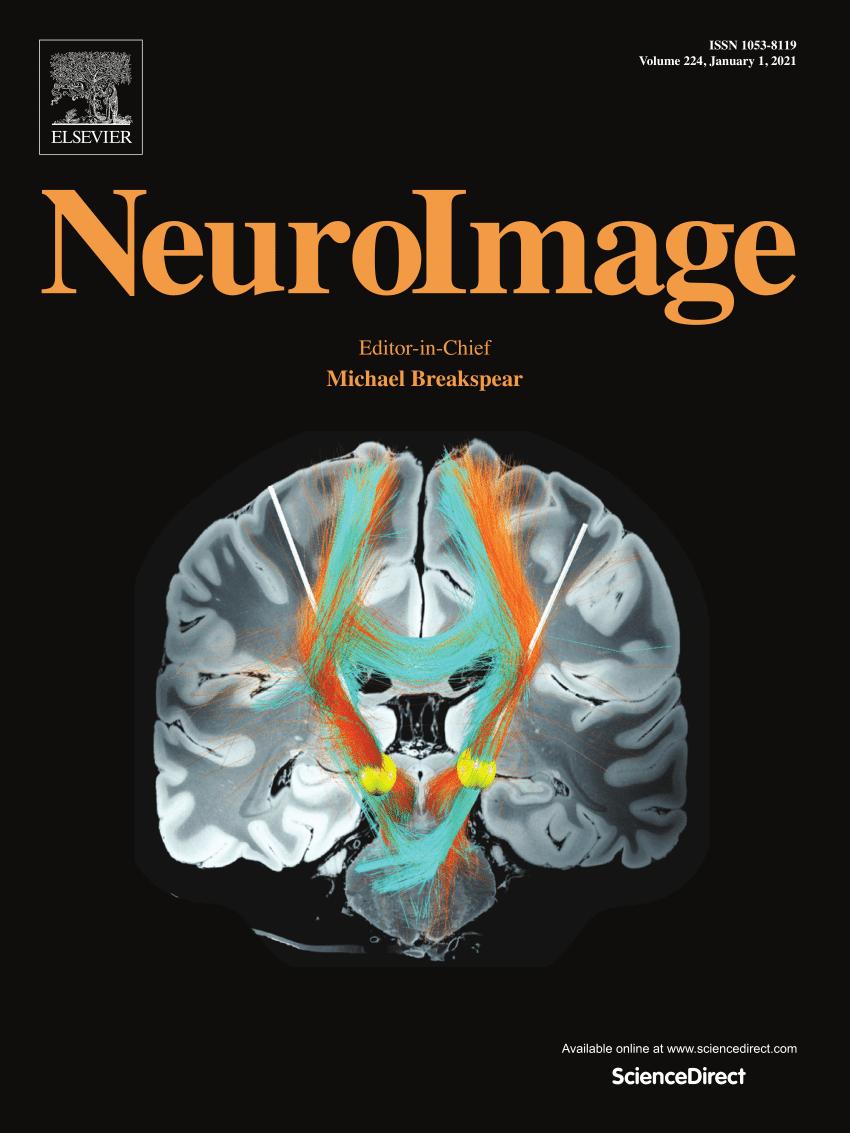Setting the tone for the day: Cortisol awakening response proactively modulates fronto-limbic circuitry for emotion processing
IF 4.5
2区 医学
Q1 NEUROIMAGING
引用次数: 0
Abstract
The cortisol awakening response (CAR) has been linked to a variety of emotion-related psychiatric conditions and is proposed to prepare the brain for upcoming stress and challenges. Yet, the underlying neurobiological mechanisms of such proactive effects on emotional processing remain elusive. In the current double-blinded, pharmacologically-manipulated study, 36 male adults (DXM group) received cortisol-repressive dexamethasone on the previous night, then performed the Emotional Face Matching Task (EFMT) during fMRI scanning the next afternoon. Relative to the placebo group (31 male adults), the DXM group exhibited lower accuracy in the emotion matching condition, but not in the sensorimotor control condition. Psychophysiological interaction (PPI) analyses revealed significant task-by-group interaction involving the right and left amygdala, but not the medial orbitofrontal cortex (MOFC) or hippocampus. Specifically, the DXM group exhibited stronger functional connectivity between the right amygdala and left dorsolateral prefrontal cortex (lDLPFC) during emotion condition but reduced connectivity in the same network during control condition, as compared to the placebo group. Meanwhile, the DXM group exhibited weaker left amygdala–right posterior middle temporal gyrus (rMTG) connectivity than the placebo group during control condition, but there was no group effect in the connectivity during emotion condition. These results indicate that the CAR proactively modulates fronto-limbic functional organization for emotion processing in male adults. Our findings support a causal link between CAR and its proactive effects on emotional processing, and suggest a model of CAR-mediated brain preparedness where CAR sets a tonic tone for the upcoming day to actively regulate neuroendocrinological responses to emotionally charged stimuli on a moment-to-moment basis.
早晨醒来为一天定下基调:前额边缘回路在男性成人情绪处理中皮质醇唤醒反应的主动准备中的作用。
皮质醇觉醒反应(CAR)与各种情绪相关的精神疾病有关,并被认为是为了让大脑为即将到来的压力和挑战做好准备。然而,这种积极影响情绪处理的潜在神经生物学机制仍然难以捉摸。在当前的双盲、药理学操作的研究中,36名男性成年人(DXM组)在前一天晚上接受皮质醇抑制地塞米松治疗,然后在第二天下午进行fMRI扫描时进行情绪面部匹配任务(EFMT)。与安慰剂组(31名男性)相比,DXM组在情绪匹配条件下的准确性较低(p < 0.01),但在感觉运动控制形状匹配条件下的准确性较低(p < 0.01)。roi -体素心理生理相互作用(PPI)分析显示,显著的任务组相互作用涉及左右杏仁核,但不涉及内侧眶额皮质(MOFC)或海马。具体来说,与安慰剂组相比,DXM组在情绪匹配过程中表现出更强的右杏仁核和左背外侧前额叶皮层(lDLPFC)之间的功能连通性(p < 0.001),但在形状匹配过程中,同一网络的连通性降低了(p = 0.023)。同时,DXM组在形状匹配过程中左杏仁核-右后颞中回(rMTG)连通性较安慰剂组弱(p < 0.001),但在情绪匹配过程中连通性无组效应(p = 0.392)。这些结果表明,在成年男性中,CAR主动为情绪加工准备额边缘功能组织。研究结果支持了CAR与其对情绪处理的积极作用之间的因果关系,并提出了一种CAR介导的大脑准备模型,其中CAR为即将到来的一天设定了一个紧张的基调,以主动调节神经内分泌对每时每刻的情绪刺激的反应。
本文章由计算机程序翻译,如有差异,请以英文原文为准。
求助全文
约1分钟内获得全文
求助全文
来源期刊

NeuroImage
医学-核医学
CiteScore
11.30
自引率
10.50%
发文量
809
审稿时长
63 days
期刊介绍:
NeuroImage, a Journal of Brain Function provides a vehicle for communicating important advances in acquiring, analyzing, and modelling neuroimaging data and in applying these techniques to the study of structure-function and brain-behavior relationships. Though the emphasis is on the macroscopic level of human brain organization, meso-and microscopic neuroimaging across all species will be considered if informative for understanding the aforementioned relationships.
 求助内容:
求助内容: 应助结果提醒方式:
应助结果提醒方式:


